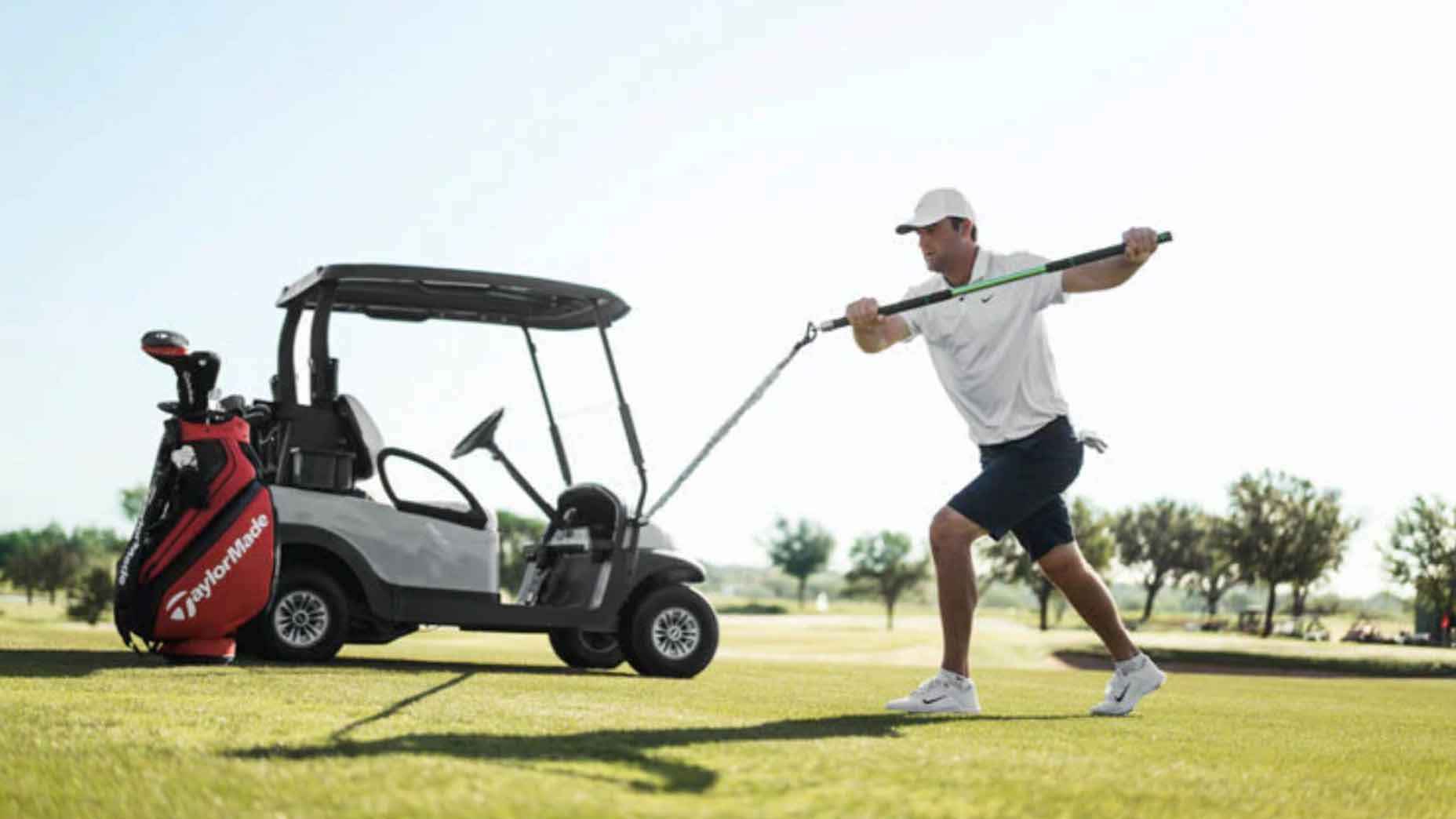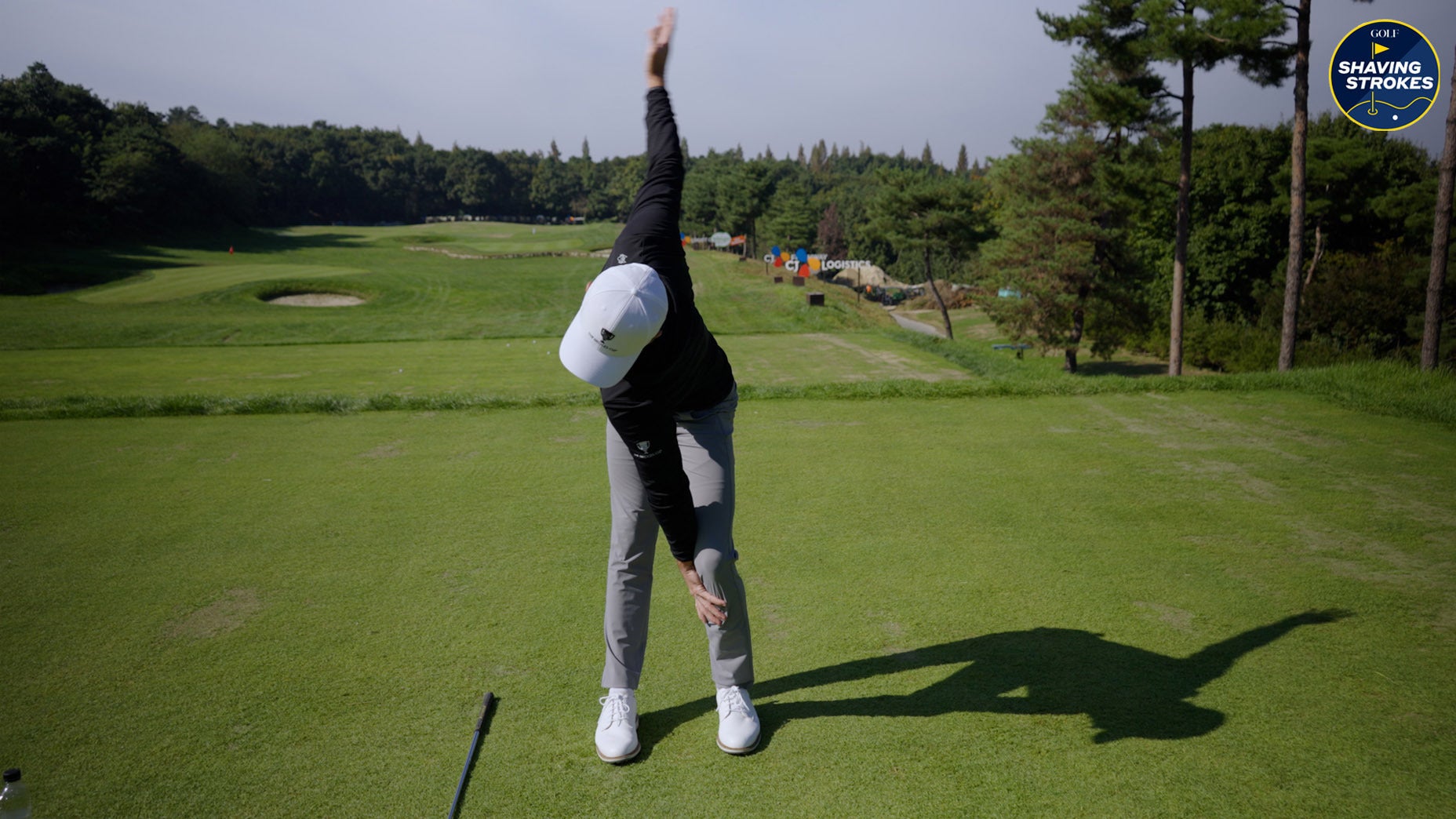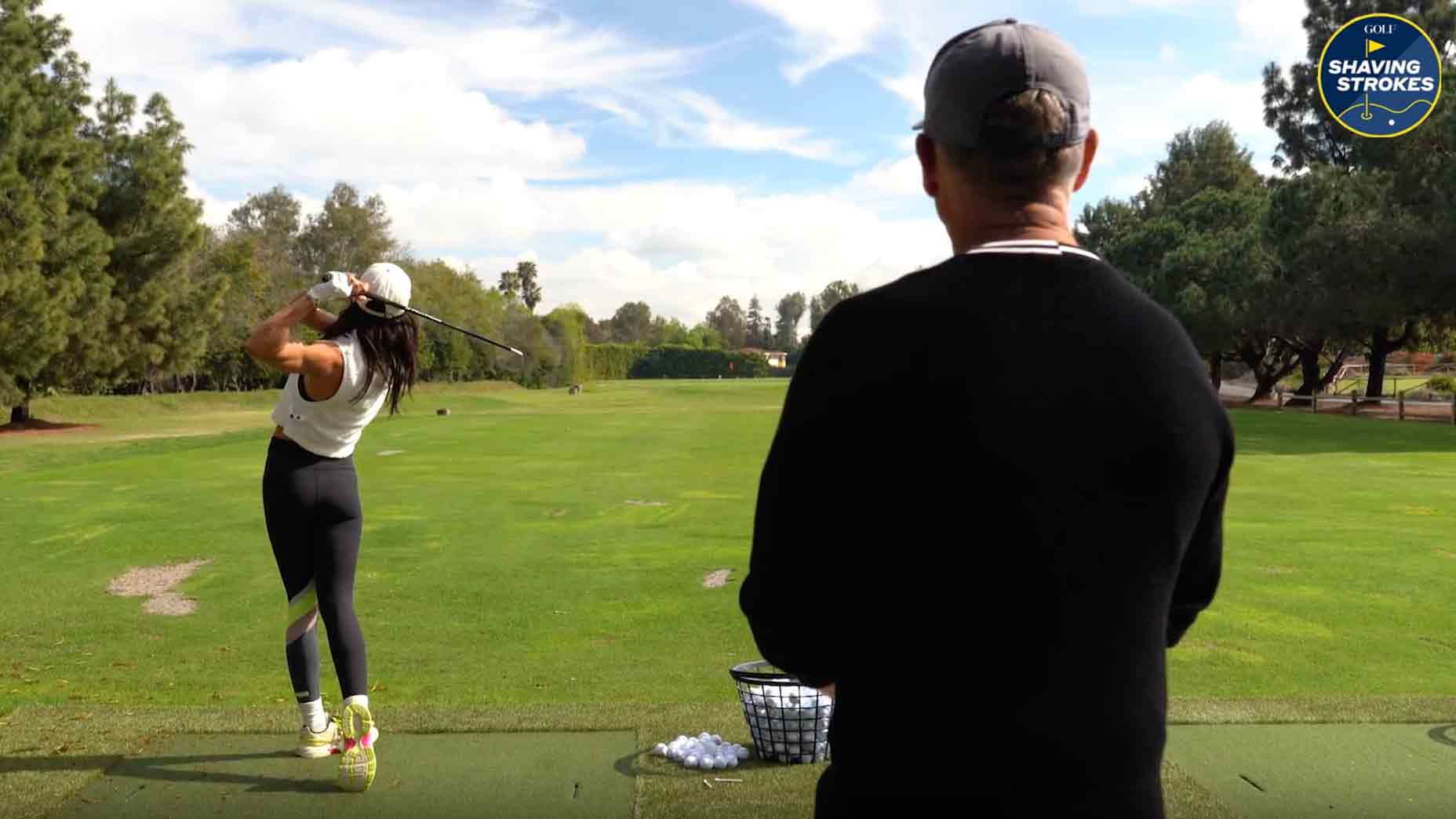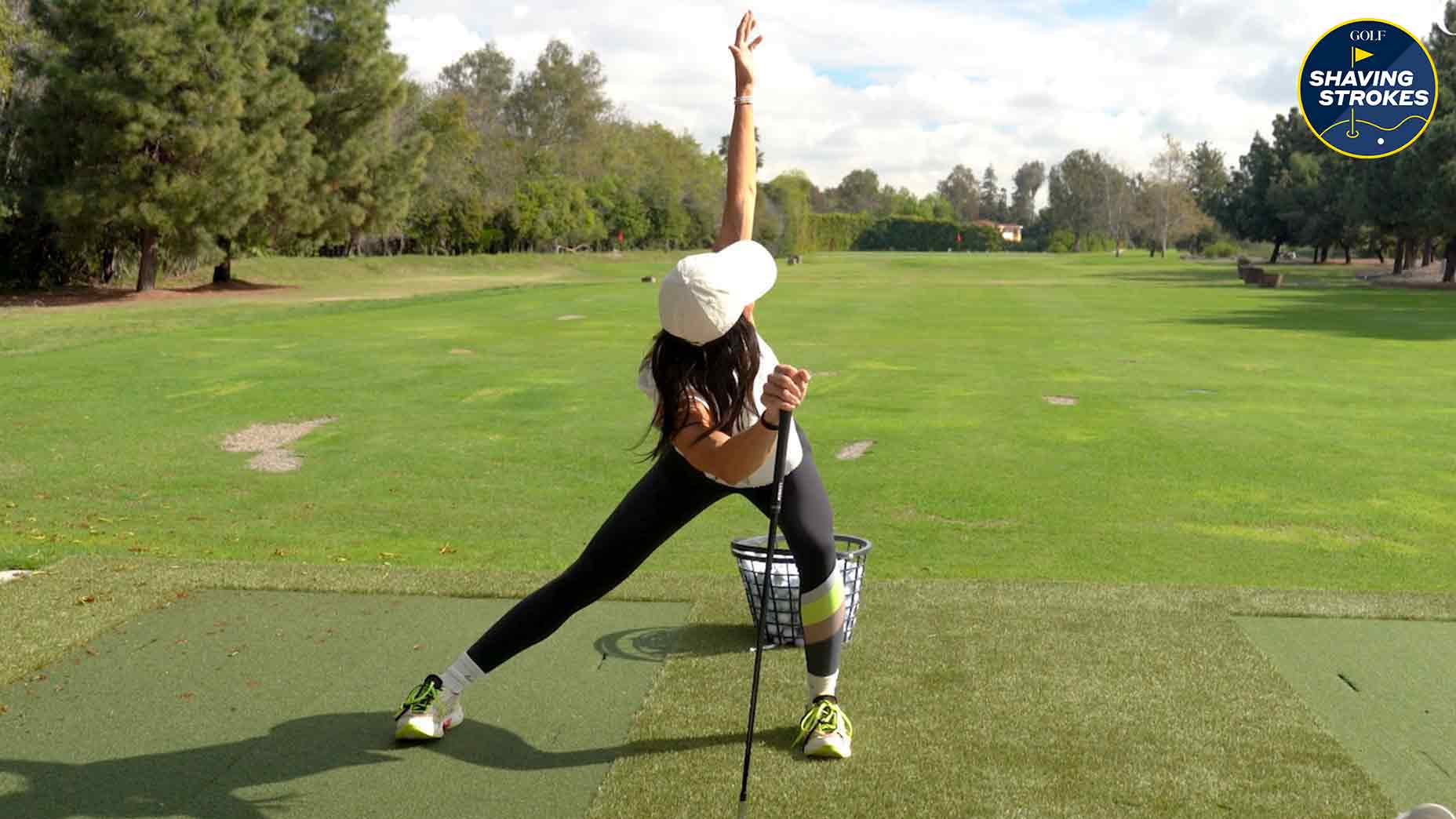 ‘It was see food, eat food’: Pro used this diet to gain ‘20 pounds of muscle’
‘It was see food, eat food’: Pro used this diet to gain ‘20 pounds of muscle’
Why mobility is the thing holding your golf swing back (and how to fix it)

Welcome to a new, three-part series in which Michael Carroll, a Level 3 TPI certified fitness coach and purveyor of the popular golf fitness blog and Twitter account Fit for Golf, breaks down the importance of mobility, stability and strength in the golf swing.
In today’s sedentary society, it’s easy to lose the mobility needed for a good golf swing. Factor in the natural aging process, and it’s easy to see why so many amateur golfers face declining swing speeds and decreased flexibility.
All of this makes mobility incredibly important in the golf swing for two primary reasons:
1) Mobility gives you options for your swing mechanics:
Our golf swings are dictated by our physical abilities. So if you have poor mobility, you will be limited in the type and degree of movement your body can make in your swing.
A basic mobility routine will help you maintain range of motion in joints that are integral to the golf swing, which will be beneficial to your game in the long run.
2) Mobility helps you generate clubhead speed:
Having adequate mobility will help you generate clubhead speed in many ways, including allowing you to create a longer backswing and improve your separation between your hips and shoulders.
Some professional golfers, like Tony Finau and Jon Rahm, can create very high clubhead speeds and bomb the ball by utilizing the fullest extent of their mobility.
Finau, who averaged 309 yards off the tee in 2019 with an average clubhead speed of 121.8 mph, is also 6’4 and 200lbs. His physical stature combined with his level of athletic ability and quality of technique set a high bar for amateur golfers to replicate.
Similarly, Rahm is known for creating huge power—and again his physical build, strength, and technique more than make up for it.
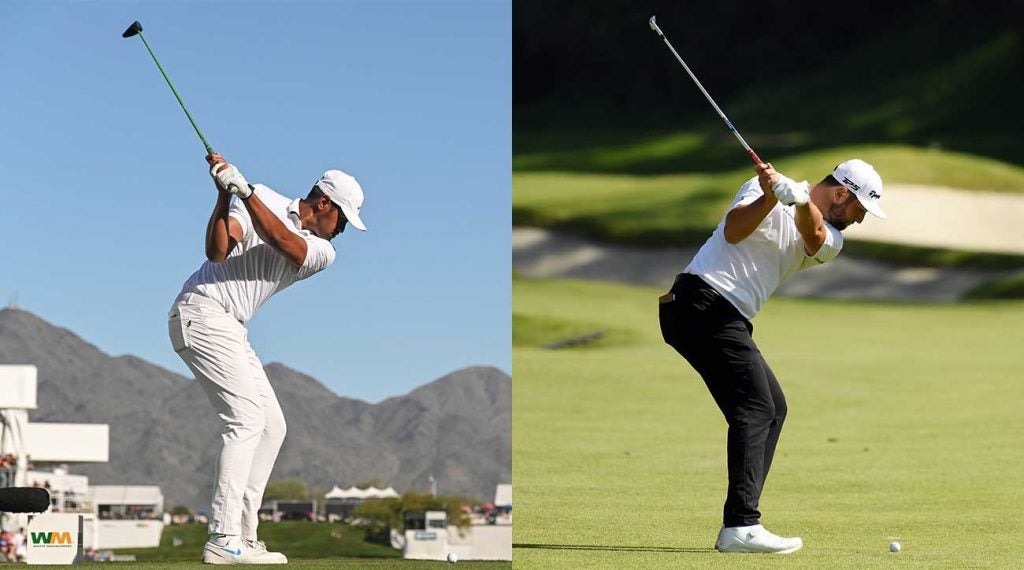
While pros like Finau and Rahm have the stature and skill to generate power with a shorter backswing, the average golfer doesn’t, which is where improved mobility and a longer backswing come into play.
Better players also tend to have the mobility to rotate their hips towards the target, while their torso is still turning away from the target. This creates a big stretch across the torso muscles, which when released, results in more speed.
This separation between your hips and torso is very important to generating speed and power, but if you have limited mobility it’s extremely difficult to do this.
Keeping up a regular mobility routine (like the one below) can be a huge factor in helping you maintain and improve your swing.
1) Spinal Flexion & Extension:
The spine is designed to be mobile, yet we rarely exercise this capability in our daily lives. A spine lacking mobility may also have a negative effect on our hip and shoulder mobility. To combat this, perform 10-20 reps of this quadruped spinal flexion and extension exercise.
2) Hip Circles:
Hip mobility is also critical in the golf swing, and it’s one of the biggest differences we see between higher- and lower-handicappers. Without adequate hip mobility you are leaving yards on the table.
ADVERTISEMENT
3) Half Kneeling Thoracic Rotation:
“I’ve lost my turn” is a common complaint from golfers, and usually refers to the shoulder turn, or thoracic spine rotation. The thoracic spine, more than any other body part, succumbs to the desk-job lifestyle. If you’re hunched over a desk all day, it’s unlikely your thoracic spine will happily rotate on the first tee.
4) Arm Circles:
The shoulder and rotator cuff are often injury sites in golfers, and your range of motion in the shoulders seems more susceptible to deterioration over time. Keeping them strong and mobile can go a long way in preventing and rehabbing injuries. For this simple exercise, you can even add a 1-2 lb weight to each hand, as long as you’re comfortable and can perform the movement correctly without load.
To receive GOLF’s all-new newsletters, subscribe for free here.
ADVERTISEMENT


